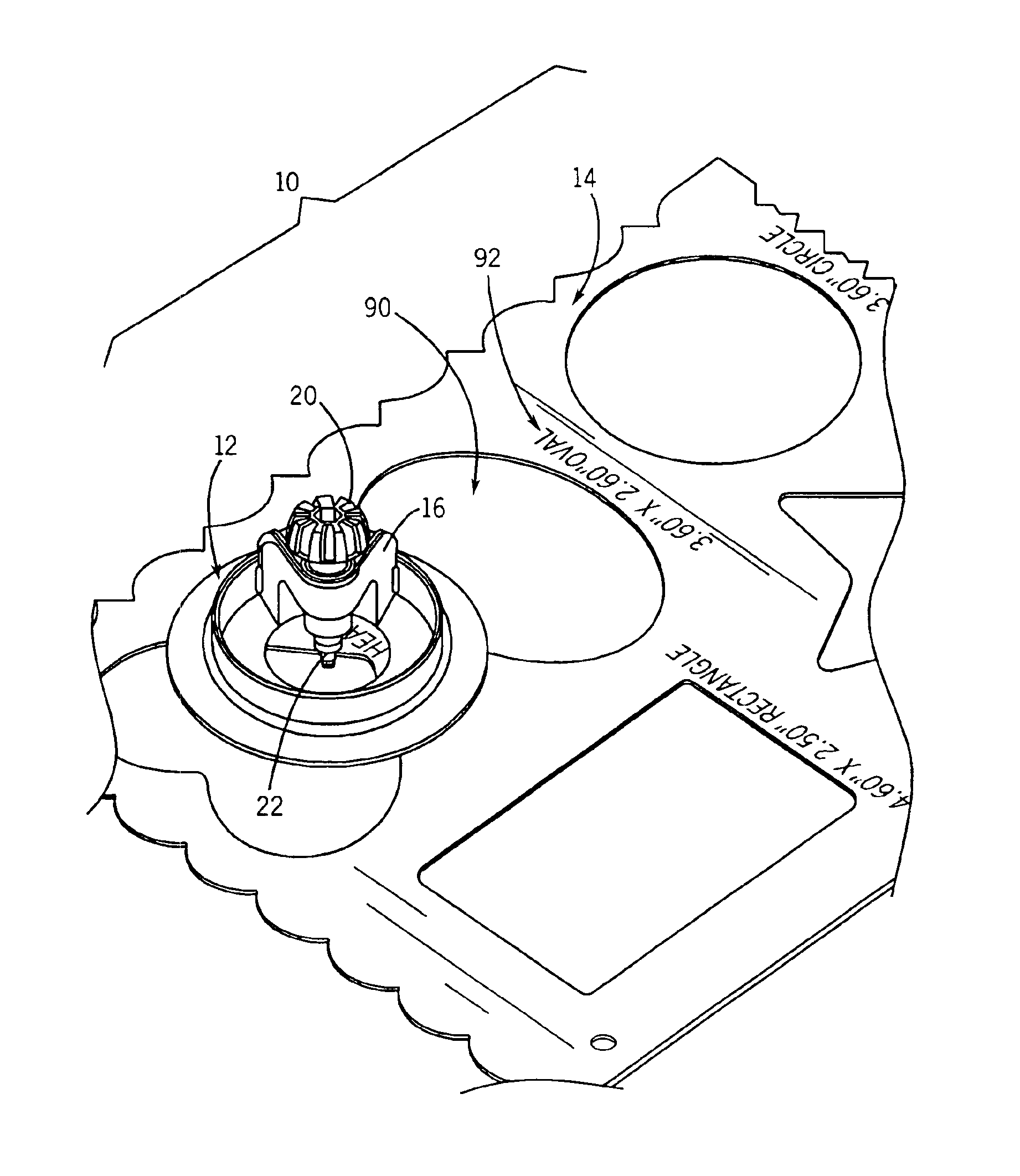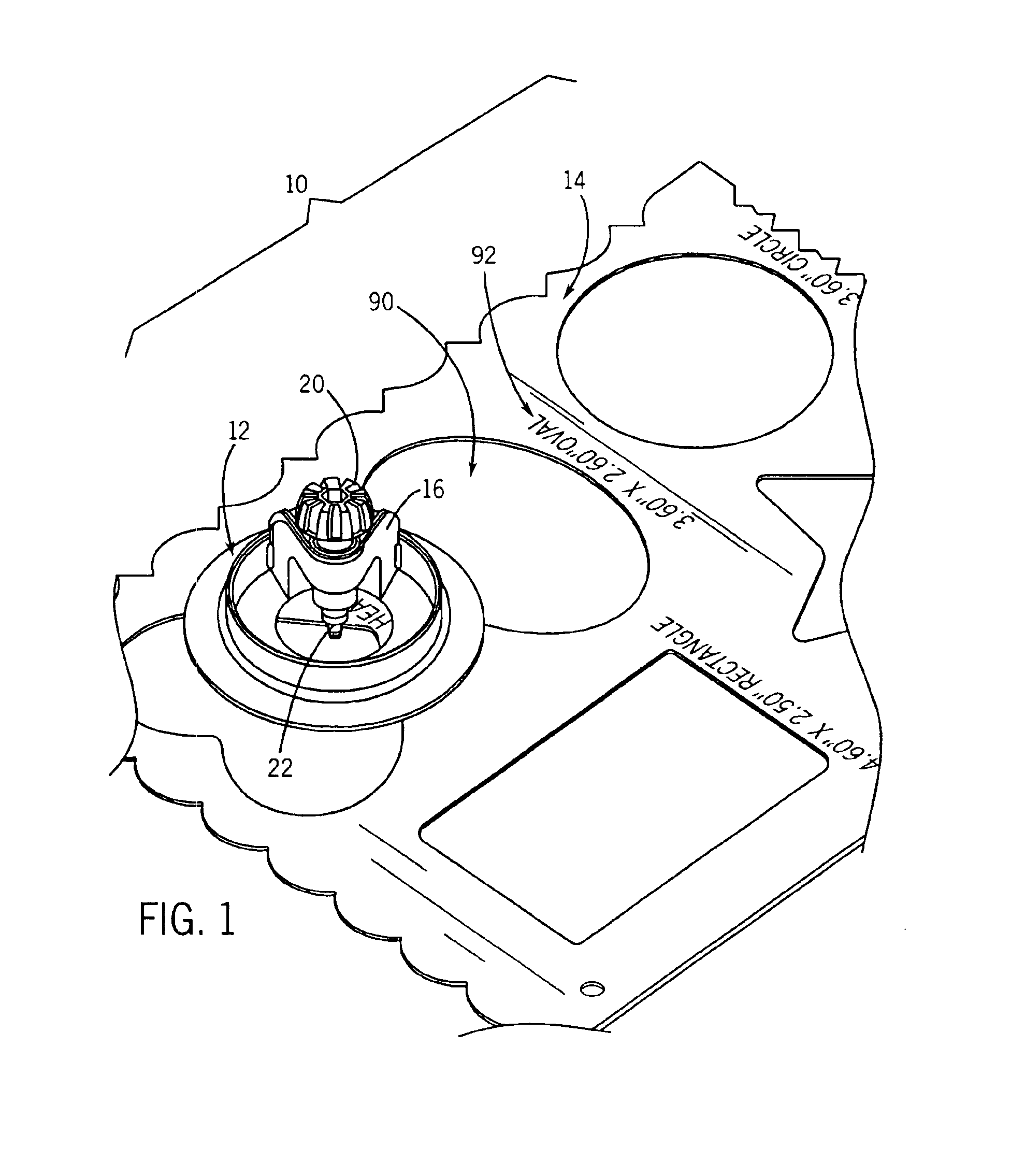Shape cutting system
a cutting system and shape technology, applied in the field of shape rendering system, can solve the problems of error in desired marking or cutting, insufficient function in conjunction with templates, and inability to securely orient existing cutting devices in regard to angle with respect to materials,
- Summary
- Abstract
- Description
- Claims
- Application Information
AI Technical Summary
Benefits of technology
Problems solved by technology
Method used
Image
Examples
Embodiment Construction
Referring to FIG. 1, a shape cutting system is indicated generally at 10. The shape cutting system 10 includes a cutting unit 12, at least one template 14 and a cutting mat 15 (see FIG. 5). The cutting unit 12 is a lightweight, handheld positionable assembly configured for operation with one of the templates 14 and for application directly onto a material to be cut without templates. The cutting unit 12 is also configured to cut material such as paper, card stock, photographs, and other related goods into desired shapes or patterns. The cutting unit 12 functions in at least two operating modes. In the first operating mode, a free-form or free-hand mode, the cutting unit 12 is placed directly upon the material to be cut and is translated preferably by a single hand of the user, in the desired direction across the material to perform free-form cutting. In the second mode of operation, the template cutting mode, the cutting unit 12 works in conjunction with at least one of the template...
PUM
| Property | Measurement | Unit |
|---|---|---|
| Pressure | aaaaa | aaaaa |
| Transparency | aaaaa | aaaaa |
Abstract
Description
Claims
Application Information
 Login to View More
Login to View More - R&D
- Intellectual Property
- Life Sciences
- Materials
- Tech Scout
- Unparalleled Data Quality
- Higher Quality Content
- 60% Fewer Hallucinations
Browse by: Latest US Patents, China's latest patents, Technical Efficacy Thesaurus, Application Domain, Technology Topic, Popular Technical Reports.
© 2025 PatSnap. All rights reserved.Legal|Privacy policy|Modern Slavery Act Transparency Statement|Sitemap|About US| Contact US: help@patsnap.com



